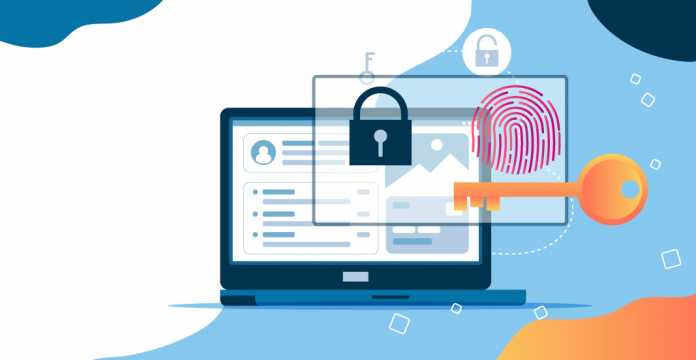
Cybersecurity breaches are on the rise across industry sectors. Many enterprises now recognize the significance of data security and cybersecurity more than ever before. Firms, in particular, take care as security attacks cost billions of dollars each year and a large amount of data is compromised.
The information security community is on high alert to a host of new and emerging cybersecurity threats. Increasingly complex cyber threats including ransomware, phishing, computer learning and artificial intelligence, blockchain, and more have placed business, government, and personal information and properties in constant danger.
With cybercrime harm expected to reach $6 trillion per year by 2021 according to Cybersecurity Projects, here is a more in-depth look at the most critical Cyber Security dangers.
What are the Cybersecurity Threats?
Security threats to defense mirror the possibility of a cyber-attack. A cyber attack is a conscious and wicked attempt by an organization or person to access another organization or individual’s infrastructure. The motivations of the intruder may include stealing of intelligence, financial gain, coercion, or disruption.
From its annual Threat Horizon report, the independent Information Security Forum, which defines itself as “the world’s foremost voice on the internet, network technology, and risk management,” warns of increased capacity for:
- Disruption — Over-reliance on vulnerable infrastructure provides the ability for premeditated internet outages capable of taking companies to its knees, and an increased risk of using malware to hijack the internet of things.
- Distortion — Malicious dissemination of disinformation, both by bots and artificial media, leads to lost faith in the credibility of the information.
- Deterioration — Rapid developments in advanced technology plus competing demands from changing national security and individual privacy laws have a detrimental effect on the capacity of organizations to monitor their own information.
Most Common CyberSecurity Threats
Social Engineering
Attacks on social media manipulate social networks to obtain access to useful data. There’s deceit at the core of all social media assaults.
Cyber attackers trap and exploit their targets into taking such acts, such as bypassing surveillance controls or exposing any sensitive data.
And the most robust cybersecurity programs can’t block an assault on social engineering, since the target encourages the hacker to access the device. Experts agree that social communications are on the rise, and that’s why we classified them as a top threat.
Hackers have become highly advanced not only in their use of technologies but also in psychology. Tripwire defines social engineers as “hackers who manipulate the one flaw found in every organization: human psychology. These attackers use a range of tools, including telephone calls and Social Media, to manipulate people into giving them access to confidential information.”
How to fight off threats from social engineering?
Most organizations routinely educate staff on how to detect threats and tactics relevant to social engineering.
It is also critical that organizations have protocols in place when they deal with confidential data. For example, a standard rule does not allow workers to exchange company account names or codes remotely. When an employee forgets a password, instead of giving them an email, they can contact a colleague.
Malware
Viruses and ransomware even with a firewall in place often get in. Indeed, even if protection software is installed, users often turn it off or change its settings because they fear it is too invasive.
Downloading an anti-malware program is the remedy.
An anti-malware program is programmed to detect something that gets infected on your computer and delete it. Be sure that the anti-malware program not only works but is still up-to-date and that the security settings are at the correct standard.
Phishing
While it’s an assault on social media, phishing has been one of the more popular and malicious cybersecurity threats nowadays.
Phishing happens in its most simple form where a hacker uses a fake identity to deceive someone into transmitting personal information, installing malware or accessing a malware-containing site.
Downloading an anti-malware program is the remedy.
Digital communication’s wide-spread use; spanning email, text messaging, video messages, and social media pages.
A popular phishing technique is used to threaten people via email. An intruder may generate an email that looks like it comes from your local bank, and the email demands you to encourage a website and enter your username and password for banking.
Another famous strategy is to build a false social media account that resembles an acquaintance or member of a family. The hacker then asks by texting for money or data, and it looks that it is your family member or friend calling for a favor.
The solution to protecting from phishing
In every social engineering attack, a critical first move is to have preparation and guidance in place. People may be trained to search for particular trends and strategies in phishing.
As for classified details, it is also essential to know how companies can reach you. Emails demanding bank information is a popular phishing technique, but most banks are telling their customers they would never contact them to ask for their details.
If you get a confidential business request or a direct social media friend post, you can notify the organization or individual personally to see if the offer is valid.
Open Access to Controlled Information
Lastly, if knowledge is not adequately protected, a security breach that does arise may get out of hand. Assume that everyone inside the organization has access to all the details. In that scenario, it not only allows hackers several entry points, but it also ensures that breaching an employee’s computer might allow them access to the organization’s critical information.
The solution is to limit access to vulnerable data
Hold sensitive data away from data that is not sensitive. This avoids the unintended exchange of confidential data, which keeps data breaches compartmentalized. For instance, a violation of position A would not risk position B if you keep your personal financial details in secure location A and R&D documents in safe location B.
Ransomware
Ransomware, as the name suggests, entails the hacker locking the victim’s device or files and keeping the information for payment. Usually, it allows the perpetrator to deposit accessing the files and the device.
Ransomware spread through spam scams or visits an infected website unwittingly.
Ransomware is crippling because of the issue of restoring damaged files. While certain people chose to pay the ransom, there is no assurance that the perpetrator will return the victim and access the device or data.
Conclusion
Proactively taking care of the above cybersecurity threats will help an organization to be better prepared in case of a data breach. Some breaches are unavoidable due to human error, unforeseen mistakes, and intrudes.
To secure your business and to prevent data loss, maintaining a consistent record of your security protocols and getting a contingency plan in place in the event of the worst happening is essential.
To learn about the various strategies and techniques you can adopt to protect your company against cybercrimes, individuals and enterprise teams should get trained in popular IT security and governance courses from an accredited training provider.
Some of the popular cybersecurity certification courses that professionals can take up are:














